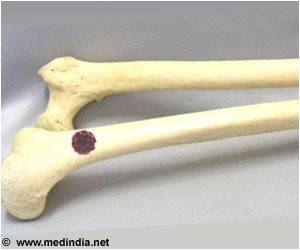
College athletes develop poor eating habits as a result of Stress during intense practice sessions.
According to a new study by Penn State researchers, unhealthy eating habits, such as wanting to be slimmer and cutting back on calories, can lead to malnutrition. College athletes, who often feel pressure to maintain a certain body type for competition, may be particularly vulnerable to these habits (1✔ ✔Trusted Source
Sport-related stress may affect whether college athletes eat enough calories
).
Emily Lundstrom, who earned her doctorate in kinesiology at Penn State in 2024, and Nancy Williams, professor of kinesiology and physiology at Penn State and Lundstrom’s doctoral adviser, led the study, which was published in Applied Physiology, Nutrition, and Metabolism.
Advertisement
Nutrient Deficiency Risks in Athletes
Underconsumption of nutrients by athletes increases the risk of energy deficiency, eating disorders, bone loss, and bone-stress injuries, according to Williams. Additionally, female athletes are at risk for adverse menstrual cyclechanges if they do not consume enough calories.
The loss of menses and declines in bone health are directly related to insufficient caloric intake, according to prior research from Williams and Mary Jane De Souza, distinguished professor of kinesiology and physiology and co-author of this study.
The researchers recruited 53 NCAA Division I athletes — 27 swimmers and 26 distance runners. The research team measured both physiological and psychological characteristics of the athletes — including body composition, mass, height, body mass index, measures of total body metabolism, and attitudes about eating and stress — to understand how different stressors affected health and well-being.
The runners — all of whom were women — were assessed in the weeks just before their competitive season began (pre-season) and again during the off-season for their sport. The swimmers — 16 women and 11 men — were assessed during the peak of their competitive season.
Advertisement
Energy Deficiency in Endurance Athletes
“Endurance athletes — including runners and swimmers — are at higher risk for energy deficiency due to high caloric expenditure,” Lundstrom said. “While we focused on runners and swimmers in this study, the relationships we observed between stress, eating attitudes, and metabolism during different phases of a competitive season may apply to other endurance sports with similar training demands and training periodization.”
By combining data from the runners and swimmers, the researchers were able to examine how endurance athletes’ attitudes, stress, and caloric intake changed across a collegiate pre-season, peak-season, and off-season.
The researchers found that sport-related stress was highest during the peak season and elevated during the pre-season when athletes were training heavily for their competitive season. During the off-season, when training demands had relaxed and training varied greatly between individuals, sport-related stress was lower.
Advertisement
Stress, Eating Habits, and Caloric Intake in Collegiate Athletes
During the pre-and-peak season, when sports-specific stress was high, results demonstrated that individuals who experienced higher sports-specific stress had higher levels of unhealthy eating attitudes.
Those athletes with unhealthy eating attitudes also were less likely to consume enough calories to meet their bodies’ needs, which can be observed through measurements of their metabolism. In the off-season, when sport-specific stress was lower, the relationships between sport-specific stress, eating attitudes, and caloric intake were no longer present.
“We thought it was noteworthy that in the off-season, many of the correlations broke down,” Williams said. “It is not as if the athletes are not training in the off-season; they just had more variability. Something about this training period disrupted the associations between sport-specific stress, eating attitudes, and whether someone consumed enough food.”
The researchers determined which athletes were not consuming enough calories by measuring participants’ resting metabolic rates. To calculate the predicted resting metabolic rate, the researchers estimated how many calories each individual needed based on their body composition from a dual-energy x-ray absorptiometry scan and other physical characteristics.
Then, to measure the actual metabolic rate, each participant lay under a ventilated hood that determined their oxygen consumption by sampling their expired air. The amount of oxygen consumed related directly to the amount of energy expended during rest and the balance of oxygen and carbon dioxide in the participant’s expired breath indicated the type of nutrients the athlete was metabolizing.
Measuring Caloric Intake and Metabolic Rates in Athletes
The researchers compared each athlete’s measured resting metabolic rate to their estimated caloric needs at rest and identified which individuals were not consuming enough calories.
Then, the researchers examined the associations between athletes’ attitudes about eating, their levels of sport-related stress, their levels of stress from other sources — like class assignments or relationships — and whether they were consuming enough. Prior research from the Women’s Health and Exercise Lab, co-directed by Williams and De Souza, validated the use of resting metabolic rate to identify people who are not consuming enough calories to meet their energy demands.
“This is one of the first research studies to examine how upstream factors, like sport-specific stress, were related to eating attitudes as well as downstream outcomes, like whether an athlete consumed enough calories,” Williams said.
More research is needed to understand whether these associations are present among athletes in other highly competitive sports, the researchers said. Still, they said this result points to specific steps that coaches and researchers should consider immediately for the health and well-being of athletes.
Impact of Stress on Collegiate Athletes’ Eating Habits
“Coaches should be aware that periods of high stress — physical, competitive, and academic — can all impact how much collegiate athletes are eating,” Lundstrom said. “So, the coaches or the athletic programs may need to do more to help athletes manage their stress during the more intense parts of the season.
Additionally, those of us who study athletes may need to consider the different phases of sports seasons when assessing athletes’ stress, eating, or well-being. If we are studying people in their offseason, we could miss significant unhealthy eating that should be captured for the athletes’ health.”
Williams and Lundstrom said they are especially interested in this population because of their backgrounds as collegiate athletes. Williams played field hockey, basketball, and lacrosse, while Lundstrom was a collegiate swimmer who also had experience as a collegiate swimming coach.
“My experiences competing and then coaching these athletes — combined with learning the physiology behind many of the issues that I experienced or witnessed — helped me bridge the gap between theory and practice,” Lundstrom said.
Reference:
- Sport-related stress may affect whether college athletes eat enough calories – (https:www.psu.edu/news/health-and-human-development/story/sport-related-stress-may-affect-whether-college-athletes-eat)
Source-Eurekalert



